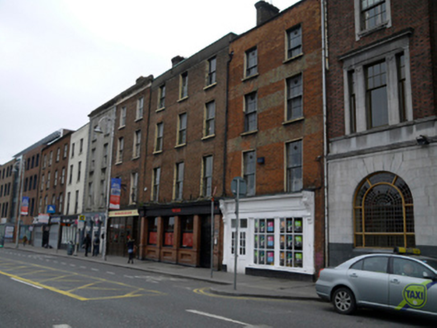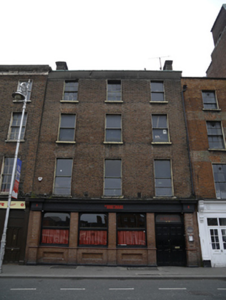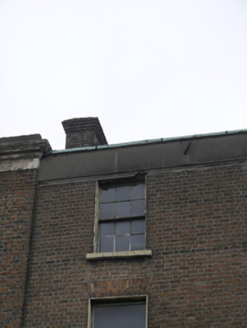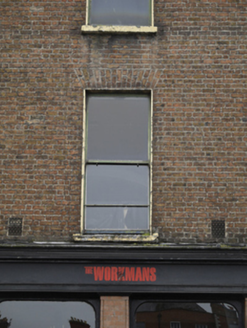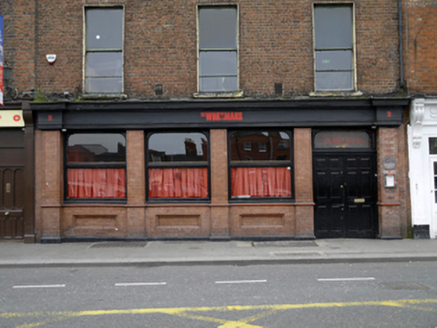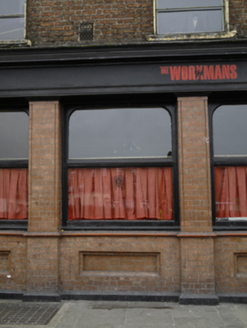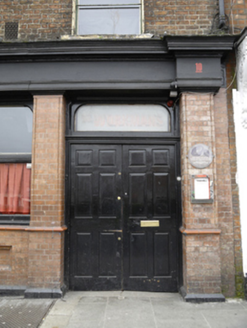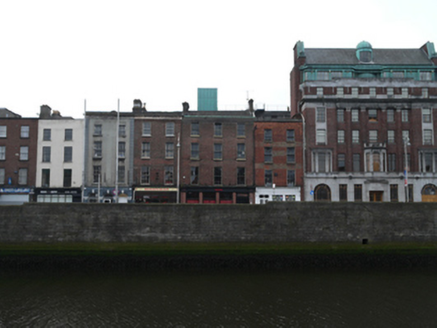Survey Data
Reg No
50020036
Rating
Regional
Categories of Special Interest
Architectural, Artistic, Historical, Social
Previous Name
City of Dublin Working Men's Club
Original Use
House
Historical Use
Clubhouse
In Use As
Public house
Date
1810 - 1830
Coordinates
315506, 234168
Date Recorded
05/04/2015
Date Updated
--/--/--
Description
Attached three-bay four-storey over basement former house, built c.1820, having shopfront to front (north) elevation. M-profile pitched slate roof, hidden behind smooth rendered parapet with recent flashing to coping to front, having yellow brick chimneystack. Now in use as public house and nightclub. Red brick walls laid in Flemish bond with moulded render plinth course to front, smooth rendered walls to rear (south) elevation. Square-headed window openings having masonry sills, raised render reveals and six-over-six pane and one-over-one pane timber sliding sash windows to upper floors. Red brick shopfront comprising pilasters with moulded brick edging flanking openings, having timber fascia and carved cornice. Square-headed display window openings with basket-headed timber framed windows and continuous moulded glazed terracotta sill over risers having recessed panels. Square-headed door opening with double-leaf timber panelled doors and basket-headed overlight. Recent metal hatch and steel-framed basement light to footpath to front. Situated to west end of Wellington Quay.
Appraisal
This building retains notable fabric including fine brick work and timber sliding sash windows which add to its historic character. The late nineteenth-century brick shopfront adds aesthetic interest to the façade, while the moulded brick attests to the artisanship involved in the manufacture of machine-made brick in the latter years of the nineteenth century. The building served as an ironmongery and saddlery warehouse in 1862 and was in use as a workingmen's club from the late nineteenth century until 2003, providing an important social role for dockers, brewers and other working class men of the city. Alterations were carried out in 1885 by architect William H. Beardwood and again in 1952 by McDonnell & Dixon. The cellar hatches inset in the pavement betray the existence of an historic basement. Wellington Quay was constructed in the early nineteenth century as an eastward extension of the original Custom House Quay.
